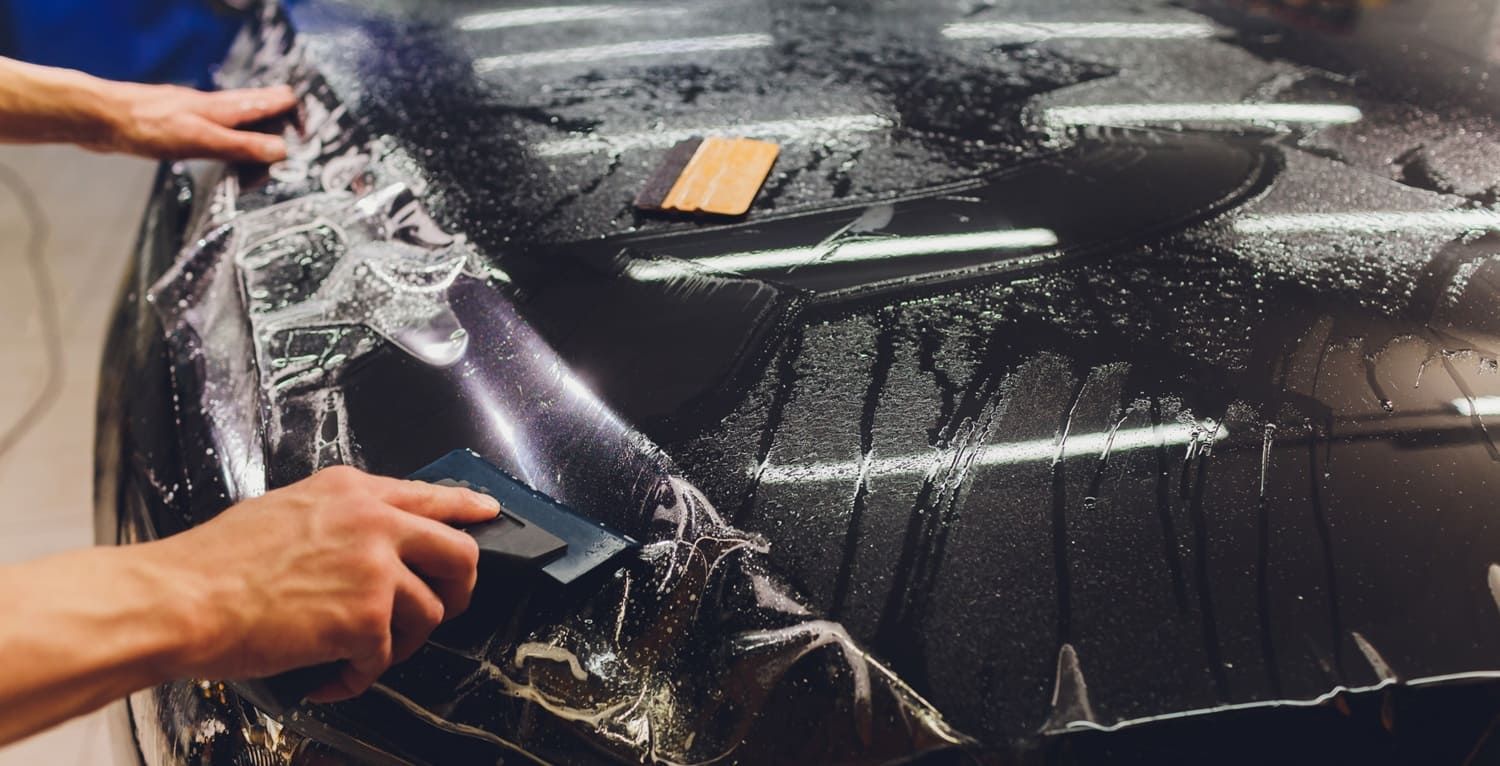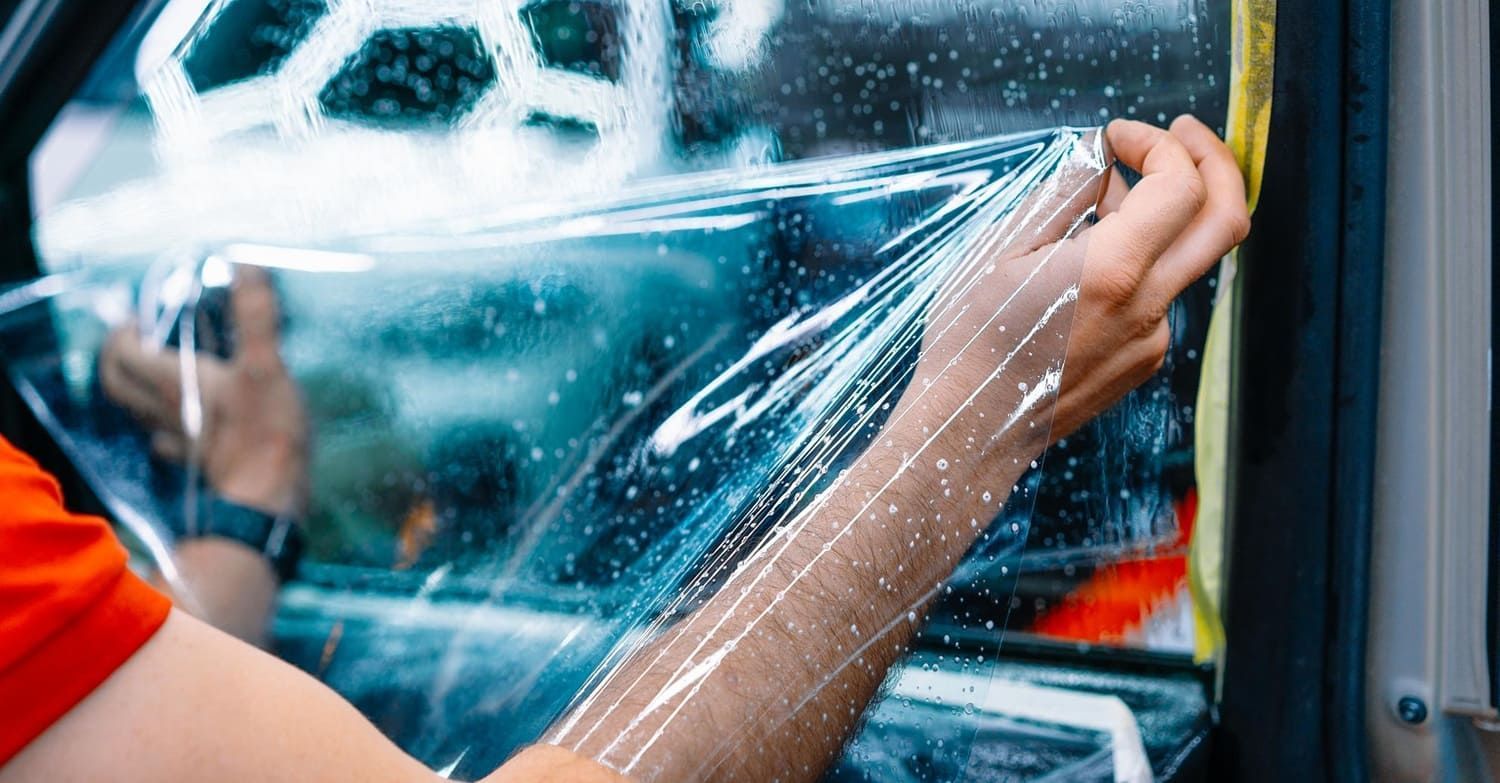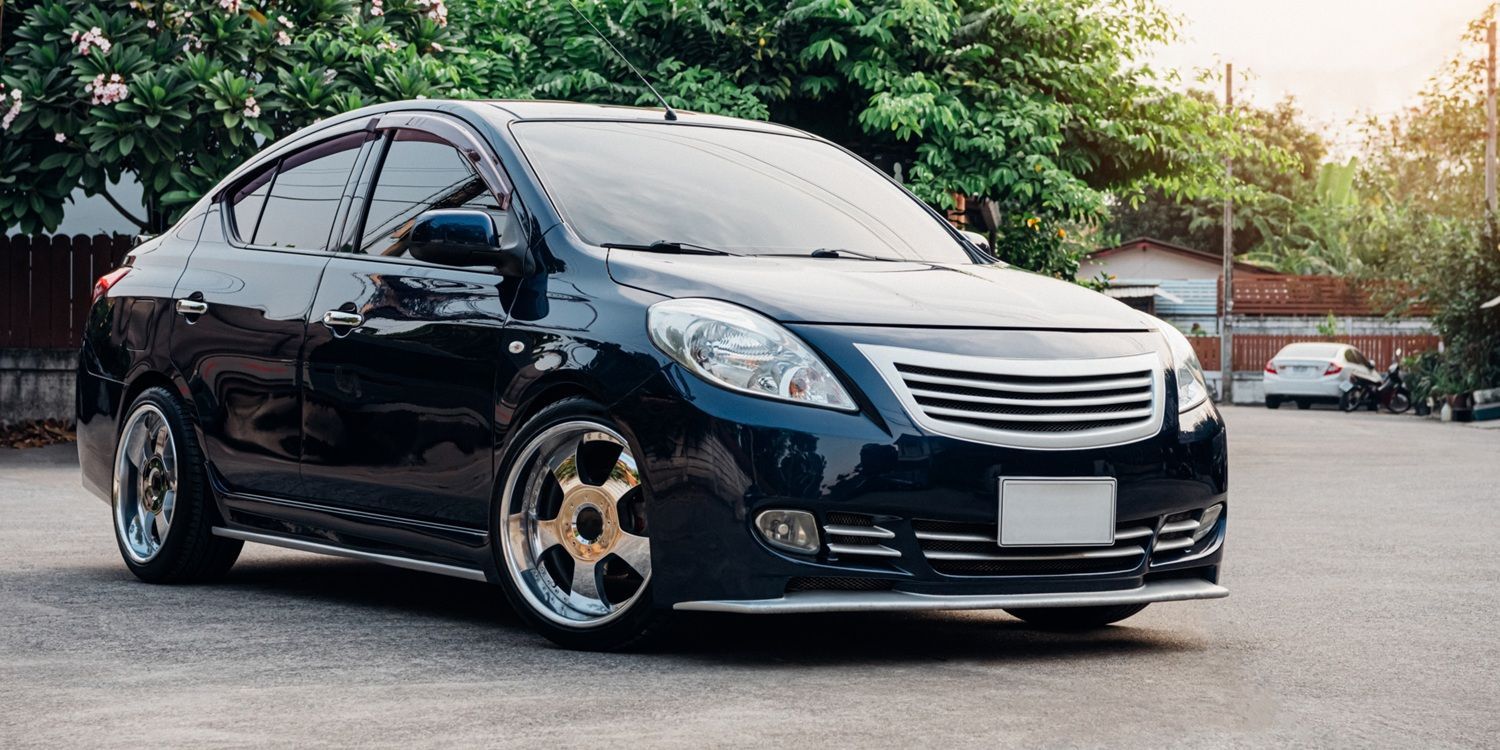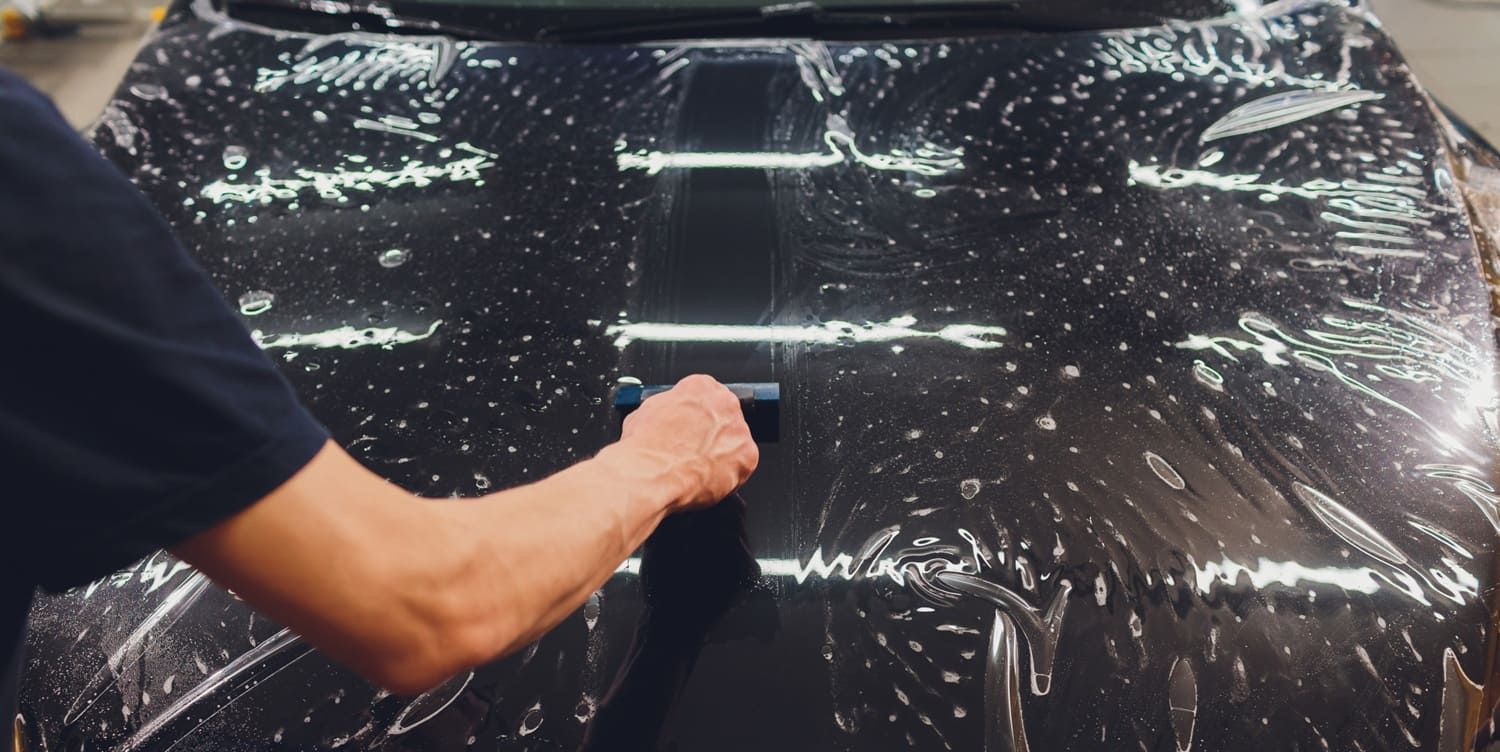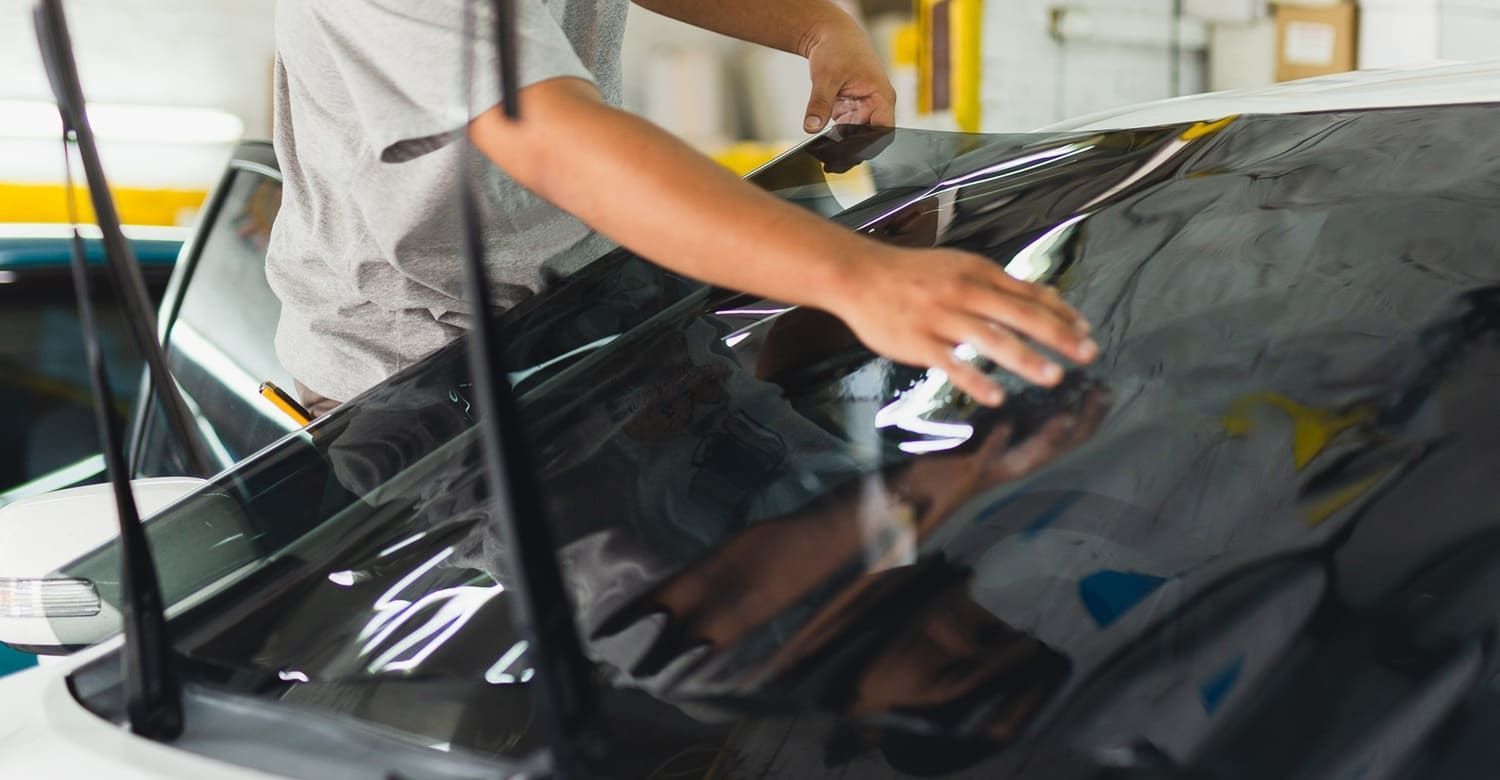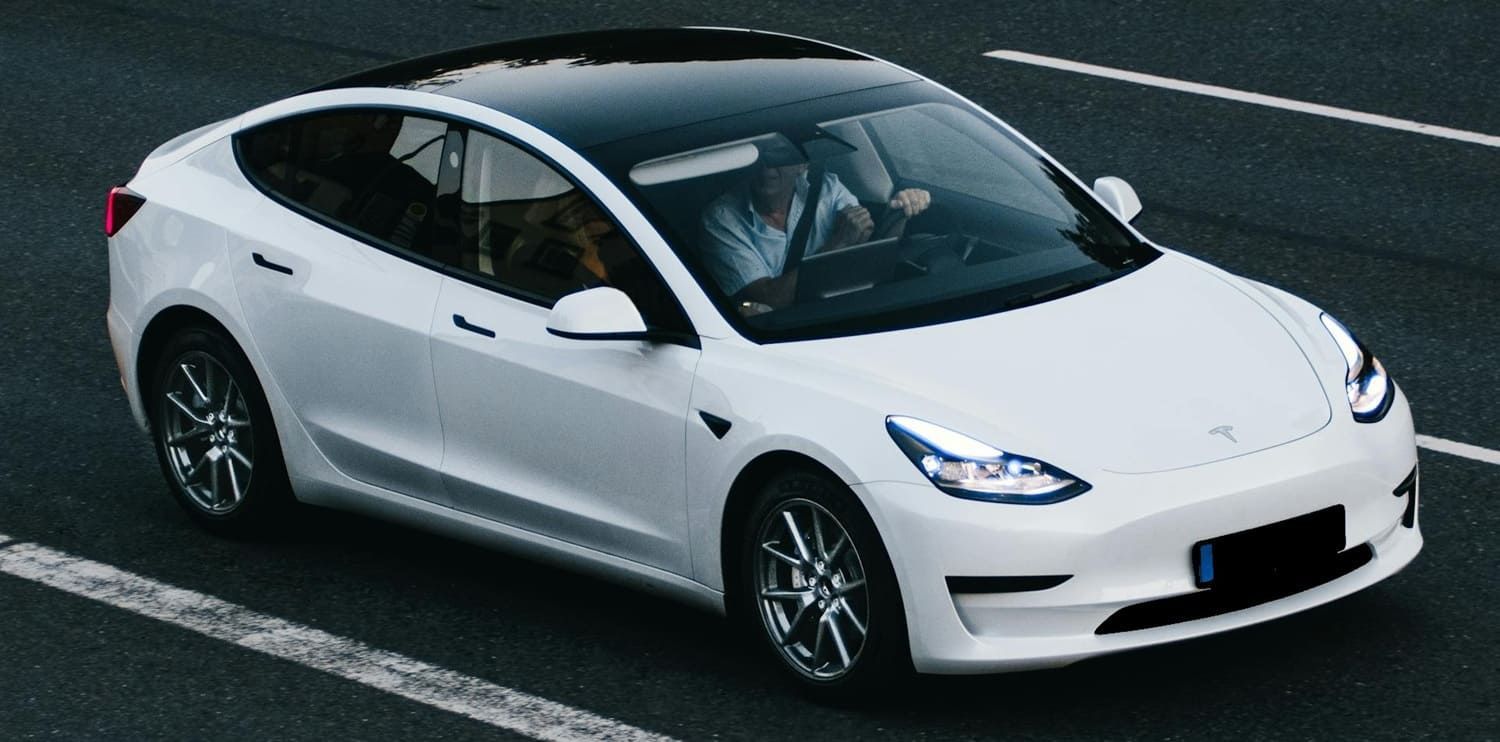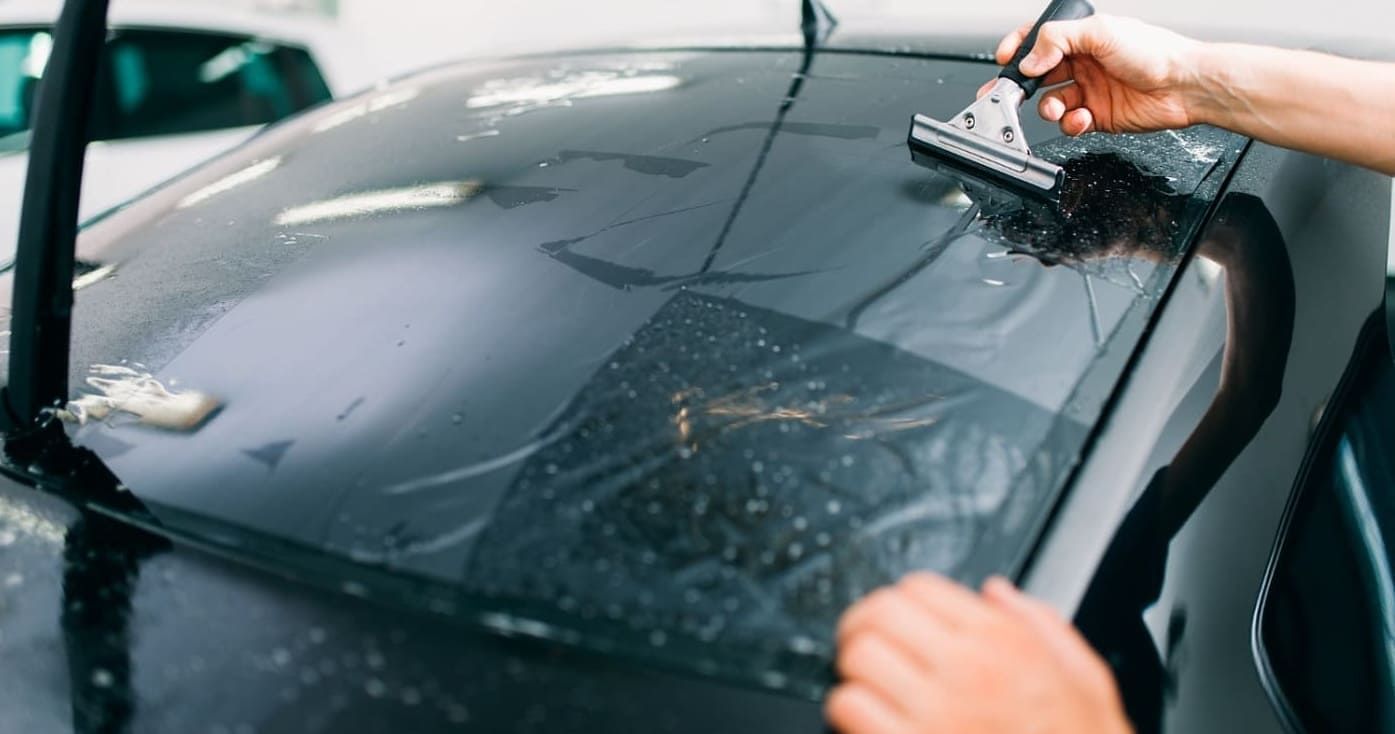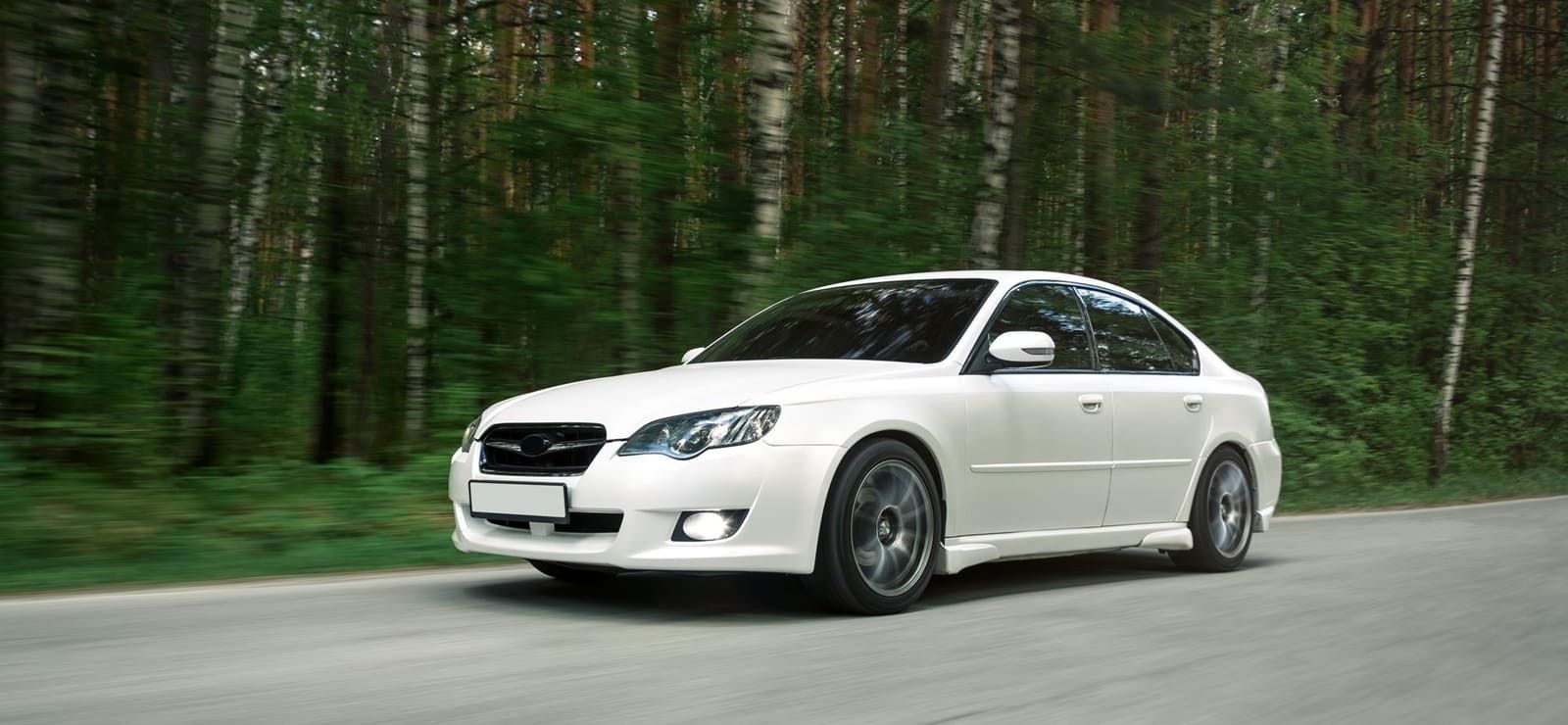PPF Maintenance Tips to Keep It Looking Flawless
Maintaining your car's paint protection film (PPF) is crucial to ensuring it continues to protect your vehicle's paint and maintain its aesthetic appeal. Whether you've just had PPF installed or are looking to improve your car wrap care routine, this guide will provide you with practical maintenance tips. Let's dive into how you can keep your PPF looking flawless for years to come.
Before we dive into maintenance tips, it's essential to understand what PPF is and why it's beneficial for your vehicle. Paint protection film is a transparent layer applied to the exterior surfaces of a car. It serves as a protective shield against scratches, stone chips, and minor abrasions, keeping your car's paint looking new.

The Composition of PPF
PPF is typically made from a thermoplastic urethane material, which offers excellent durability and flexibility. This material is chosen for its ability to absorb impact without damaging the car's paint. The urethane layer is clear, so it doesn't alter the appearance of your vehicle's paint color or finish.
Benefits Beyond Protection
PPF not only protects but also enhances the vehicle's appearance. It adds a glossy finish to the surface, making the car look newer and shinier. Additionally, it can be customized to add a matte finish for those who prefer a more subdued look. This versatility makes PPF an attractive option for many car owners.
Longevity and Cost Efficiency
Investing in PPF can be cost-effective in the long run. Although the initial installation might seem pricey, it saves money by reducing the need for frequent paint repairs or touch-ups. The film can last for several years if maintained properly, providing long-term protection and preserving the car's resale value.
Why Choose PPF?
PPF is a popular choice among car enthusiasts and owners who wish to preserve their vehicle's appearance while adding a layer of protection. The film is self-healing, meaning minor scratches and swirl marks can disappear with the application of heat. Moreover, PPF helps maintain the car's resale value by keeping the paint in pristine condition.
The Self-Healing Technology
One of the standout features of PPF is its self-healing properties. When minor scratches or swirl marks appear, they can be erased with the application of heat, either from the sun or a heat gun. This self-healing capability ensures the film looks smooth and clear over time, maintaining the car's aesthetics effortlessly.
Enhancing Resale Value
A car that looks new and well-maintained is more attractive to potential buyers. By protecting the paint with PPF, you preserve the car's exterior, which in turn keeps the resale value high. Buyers are often willing to pay more for vehicles that don't require immediate cosmetic repairs or paint touch-ups.
Customization and Style
PPF can be a stylish addition to any vehicle. It allows for customization without permanent changes. Car owners can choose from various finishes like gloss, matte, or satin, enabling them to personalize their vehicle's appearance while still benefiting from the protective qualities of the film.
Essential PPF Maintenance Tips
Maintaining your PPF involves a few simple steps that can make a significant difference in its longevity and appearance. Let's explore these tips.
Regular Washing
One of the most effective ways to maintain your PPF is through regular washing. Dirt, grime, and other contaminants can accumulate on the film, diminishing its clarity and protective qualities. Here's how to wash your PPF-covered car properly:
- Use a Gentle Cleaner: Opt for a pH-balanced car wash soap. Avoid harsh chemicals or abrasive cleaners that can damage the film. A gentle cleaner helps maintain the film's integrity and ensures that it remains clear and effective in protecting your vehicle.
- Soft Wash Mitt: Use a microfiber wash mitt to gently clean the surface. This helps prevent scratches on both the PPF and your car's paint. The soft texture of the mitt ensures that no new scratches are introduced during the cleaning process.
- Rinse Thoroughly: Ensure all soap is rinsed off completely. Any leftover residue can cause water spots or streaks. Thorough rinsing is crucial to prevent these unsightly marks, which can detract from the film's glossy appearance.
- Dry with Care: Use a clean microfiber towel to dry the car. Pat, rather than rub, to avoid unnecessary friction. Patting dry reduces the risk of creating micro-scratches on the film, keeping it looking flawless.
Avoiding Harsh Chemicals
When caring for your PPF, it's important to avoid certain chemicals that can degrade the film over time. Stay away from:
- Solvents like acetone or alcohol: These can weaken the film's adhesive properties, causing it to peel or lift. Such solvents are too harsh and can lead to irreversible damage.
- Harsh detergents and degreasers: These products can strip the protective layer of the film, reducing its effectiveness. They often contain strong chemicals that can deteriorate the film's surface.
- Abrasive polishes and waxes: These can scratch the film and diminish its clarity. Always opt for products specifically designed for PPF to ensure compatibility and safety.
Protecting from Sun Exposure
While PPF is designed to withstand UV rays, prolonged exposure to the sun can still impact its appearance. Whenever possible, park your car in a shaded area or use a car cover to protect it from direct sunlight. This practice not only preserves the PPF but also protects your vehicle's interior from UV damage.
- Using Car Covers: A car cover can be an effective way to shield your vehicle from the sun's harmful rays. Choose a cover made from breathable material to prevent moisture build-up, which can lead to mold or mildew.
- Parking in Shaded Areas: Whenever possible, choose shaded parking spots. This simple practice can significantly extend the life of your PPF by reducing its exposure to harsh sunlight.
- Regular UV Protection: Consider applying a UV protectant spray to your PPF periodically. These sprays are designed to enhance the film's resistance to UV rays, maintaining its appearance and effectiveness.
Professional Maintenance and Inspection
Even with regular care, it's wise to have your PPF inspected by professionals occasionally. They can identify potential issues that might not be visible to the untrained eye and ensure that the film is adhering properly.
When to Seek Professional Help
- Peeling or Lifting: If you notice any edges of the PPF lifting or peeling, it's time to consult a professional. Prompt attention can prevent further damage and ensure the film continues to protect your vehicle effectively.
- Bubbling: Air bubbles can form under the film, especially if it wasn't applied correctly. These should be addressed immediately. Professionals have the tools and expertise to fix bubbling issues without causing additional damage.
- Discoloration: Yellowing or other color changes may indicate the film needs replacement. Discoloration can compromise the film's aesthetic appeal and protective qualities, so it's essential to address it promptly.
The Benefits of Professional Inspection
Regular professional inspections can catch issues early, preventing costly repairs or replacements. Professionals can also provide expert advice on maintaining your PPF and suggest products that enhance its longevity.
Choosing the Right Professional
When selecting a professional for PPF maintenance, look for those with a good reputation and positive reviews. Ask for recommendations from friends or other car enthusiasts to find someone you can trust with your vehicle.
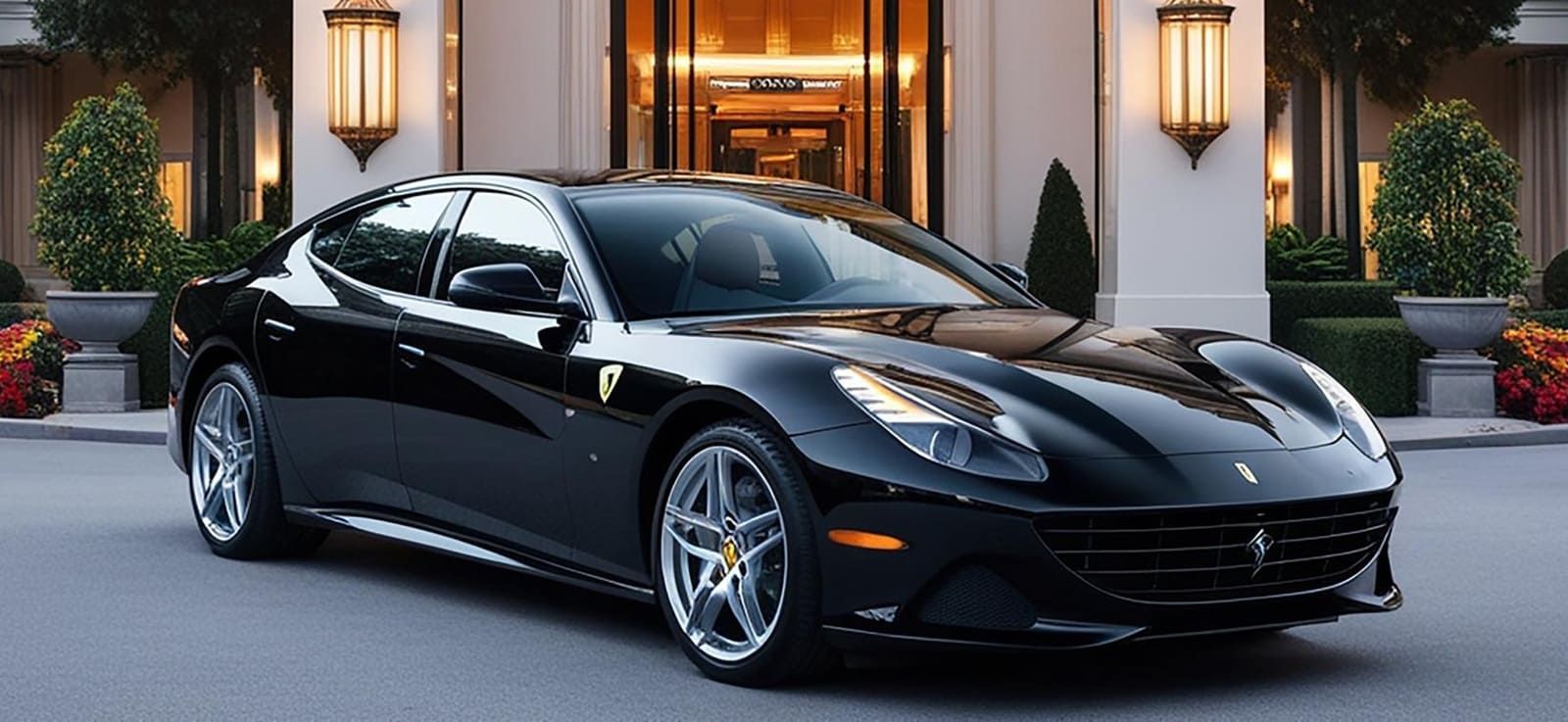
Car Wrap Care Beyond PPF
PPF is an essential part of car wrap care, but there are additional steps you can take to maintain the overall appearance of your vehicle.
Waxing and Sealing
Though PPF provides excellent protection, applying a high-quality wax or sealant can enhance its gloss and add an extra layer of protection. Be sure to choose products that are PPF-safe and designed for use on film surfaces.
- Choosing the Right Wax: Not all waxes are suitable for PPF. Look for those specifically labeled as safe for use on film surfaces. These products will enhance the film's gloss without causing damage.
- Benefits of Sealing: Sealing your PPF can provide an additional barrier against environmental contaminants. A good sealant will help repel water and dirt, making cleaning easier and maintaining the film's appearance.
- Application Tips: Apply wax or sealant in small sections, using a soft applicator pad. Buff gently with a microfiber cloth to ensure an even finish without streaks.
Routine Inspections
Regularly inspect your car's surface for any signs of damage or wear. Catching issues early can prevent more significant problems down the line.
- Inspecting for Scratches: Look closely for any scratches or marks on the PPF. Addressing them early can prevent them from worsening or affecting the underlying paint.
- Checking for Adhesion: Ensure that all edges and seams of the PPF are securely adhered to the vehicle. Loose edges can lead to peeling and require professional attention.
- Overall Condition Assessment: Regular inspections allow you to assess the overall condition of the PPF. If you notice any changes in appearance, such as dullness or discoloration, it may be time for professional maintenance.
Finding PPF Near You
If you're considering PPF for your vehicle or need professional maintenance, finding a reputable service provider is crucial. Search for "PPF near me" to locate experienced technicians who can offer installation and care services. Check reviews and ask for recommendations to ensure you choose a provider with a good track record.
- Researching Providers: Take the time to research potential providers in your area. Look for those with extensive experience and positive customer feedback.
- Assessing Quality: Visit the provider's facility if possible. A clean, organized workspace is often a good indicator of professionalism and attention to detail.
- Inquiring About Services: Ask about the range of services offered, including installation, maintenance, and any warranties available. A provider that offers comprehensive services can be a valuable resource for your PPF care needs.
Conclusion
At Top Line Motor Sport, the best PPF installers near you serving Cape Coral, FL, we’re dedicated to helping you keep your vehicle protected and pristine for years to come.
Maintaining your paint protection film is essential for preserving the look and value of your vehicle. By following these PPF maintenance tips, you can ensure that your car remains protected and looking its best. Regular washing, avoiding harsh chemicals, and seeking professional help when necessary will keep your PPF flawless.
Remember, a little care goes a long way in maintaining your vehicle's appearance and protecting your investment. Whether you're a car enthusiast or simply wish to keep your ride looking new, these tips will serve you well in your car wrap care journey.
Contact Top Line Motor Sport today for a free estimate on professional PPF installation in Cape Coral, FL.
Commitment to Care
Maintaining PPF requires consistency and attention to detail. By committing to a regular care routine, you extend the life and effectiveness of the film. This commitment not only protects your investment but also ensures your vehicle looks its best at all times.
Embracing Technology
As technology advances, new PPF materials and maintenance products are continually being developed. Stay informed about the latest innovations to take advantage of improved protective qualities and easier maintenance solutions.
Sharing Knowledge
If you find success with your PPF maintenance routine, consider sharing your experiences with fellow car enthusiasts. Your insights can help others maintain their vehicles effectively, fostering a community of informed and caring car owners.
FAQs About Maintaining Paint Protection Film (PPF)
How do I clean my car after PPF installation?
Wait at least 7 days after installation before washing. Then use a pH-neutral car shampoo, soft wash mitt, and touchless drying to avoid scratching the film.
Can I use a pressure washer on PPF?
Yes—but keep the pressure under 1,800 PSI, use a fan tip, and stay at least 12 inches away from film edges to prevent lifting.
How often should I wash a car with PPF?
Regularly—ideally every 1–2 weeks—to prevent dirt, bugs, and road grime from building up and dulling the film's finish.
Does PPF require waxing or polishing?
No. Most PPF has a self-healing topcoat that resists minor scratches. However, you can apply PPF-safe spray sealants for added gloss and hydrophobic properties.
Can I use ceramic coating on top of PPF?
Yes. Many installers apply ceramic coatings over PPF to boost shine, make cleaning easier, and enhance durability.
How do I remove bugs or bird droppings from PPF?
Clean them off as soon as possible using a gentle bug remover or warm soapy water, since acidic residues can stain if left too long.
Will PPF yellow over time?
High-quality modern films like XPEL, SunTek, or LLumar are UV-resistant and non-yellowing, but poor maintenance or low-grade products may discolor.
Can I polish or buff PPF if it gets dull?
Only with PPF-safe products and very light techniques. Aggressive buffing can damage the film. Always consult a pro detailer first.
What’s the best drying method after washing PPF?
Use a clean microfiber towel or a touchless blower to dry. Avoid dragging towels across the surface to reduce swirl marks.
Does PPF need to be resealed or maintained yearly?
While not required, applying a PPF-safe sealant every few months can enhance hydrophobicity and visual clarity.
Can I go through automatic car washes with PPF?
Touchless car washes are generally safe. Avoid brush-style washes, which can lift film edges or scratch the surface.
Is clay bar safe for PPF?
Use only PPF-approved clay bars or synthetic clay mitts with proper lubricant. Traditional clay can be too aggressive.
What should I avoid when maintaining PPF?
Avoid abrasive sponges, strong solvents, acidic cleaners, and excessive heat or high-pressure water near edges.
Can I wax over ceramic-coated PPF?
Not necessary. Ceramic coatings eliminate the need for wax. Adding wax may even interfere with the coating’s performance.
What if I notice peeling or bubbles under the film?
Contact your installer immediately. These issues may be covered under warranty if caught early and not due to damage or neglect.
Does PPF need special care in extreme climates?
Yes. In hot climates, park in the shade to reduce UV load. In cold areas, rinse off salt regularly to protect edges and surface.
How long does PPF stay flawless with proper care?
With good maintenance, premium PPF can look great for 7 to 10 years, especially with regular cleaning and optional ceramic coating.
Can I use detail sprays or waterless wash on PPF?
Yes, as long as they’re formulated for film or coated surfaces. Always use clean microfiber towels to avoid scratching.
What’s the best way to keep PPF glossy?
Wash regularly, avoid contamination buildup, and apply a film-safe sealant or coating every few months to maintain its deep shine.
Should I reapply ceramic coating over PPF annually?
Some coatings last 2+ years, but top-up sprays or boosters every 6–12 months can maintain peak performance.

